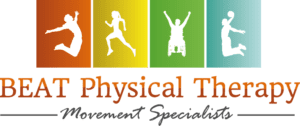Physical Therapy Treatment in Columbia, MD following Seatbelt Injuries in Motor Vehicle Accidents
Seatbelts are intended to keep drivers, passengers, or occupants in place to prevent their physical collision with the interior of the car.
A seatbelt is instrumental in holding occupants in place and avoiding or at least minimizing the potential for injury. When a crash occurs, the force of impact against another vehicle or object may stop the car itself, but the body remains moving at the previous speed. Sudden stops like this result in a dangerous situation in which drivers or passengers may come into violent contact with the steering wheel, dashboard, or windshield.
Safety belts or Seatbelts save lives’, however, it can also cause certain auto accident injuries, even when they are fastened, secured, and functioning properly. After a traumatic car accident, seatbelts may have prevented more serious consequences, but can also cause acute pain in the chest, abdomen, shoulders, neck, and back.
Shoulder injuries are common to passengers of cars wearing shoulder strap style seatbelts. The shaking motion of the accident leads to pain in the shoulder of which chest is also harmed. Chest pain is more serious because it may be sign of fractured sternum or broken ribs.
Lap and shoulder type seatbelts usually increase the chances of seatbelt injuryThe use of lap belts can cause trauma to the back or spine (more particularly the lumbar spine, or lower back), which can lead to different symptoms in various areas of the body.
(6) Six Common Seatbelt Injuries:
1. Bruised or Fractured Ribs
Patients can treat bruised ribs by icing the area affected, resting your body, and carefully controlling your breathing patterns. Consult a physical therapist with a specialty in handling orthopedic conditions.
2. Chest and Sternum Injuries
3. Shoulder Injuries
Car seatbelts can cause injuries to the soft tissue in your shoulder during collisions. The force from an auto accident can tear the tendons and muscle fibers in your shoulder, which can cause discomfort and severe pain. Icing the area will help reduce inflammation. A customized & consistently performed physical therapy routine is necessary to restore shoulder function and movement.
4. Abdominal Soft Tissue
While not always in the immediate area of the seat belt impact, the pressure from a high impact collision can also affect your abdominal region and nearby organs. Even if you don’t feel pain right after the vehicular accident, you may experience abdominal pain later. Any pain & discomfort can be addressed by seeking a physical therapy consultation to evaluate and treat you. Seeking rehab treatment also ensures that you won’t have organ problems in the future right following your accident.
5. Abrasions and Lacerations
New cars, SUVs, minivans, trucks, or most automobiles today have well-designed safety belts. Older models still have rough seat belts, which, when rubbing against your skin, can result in painful scrapes and cuts. Make sure you get your wounds treated to prevent infection from developing. Scrapes and imprints can be found in many areas of your body where the belt touches.
If you experience these injuries after a car accident, seek pt treatment in order to manage these conditions.
6. Sciatica, Herniated or Bulging discs, or Myalgias (muscle pains)
Herniated or bulging discs, or Myalgias (muscle pains) are other conditions that can be caused by trauma while wearing a seatbelt. Herniated or bulging discs in the lumbar spine may press against the spinal nerve roots that exit on either side of the spine and lead to sciatica or compression/inflammation of the sciatic nerve. Sciatica may result from trauma to the back (lumbar spine) and may lead to pain in the buttock, lower back, thigh, calf, and foot. Patients normally experience muscle weakness, numbness, and/or a tingling sensation.
